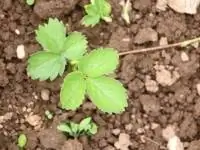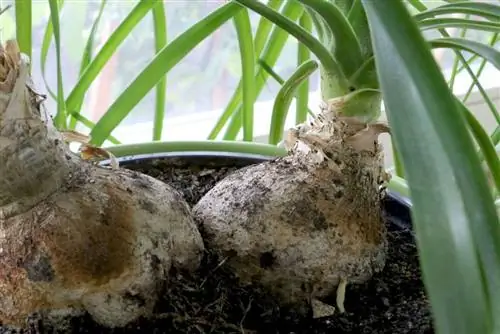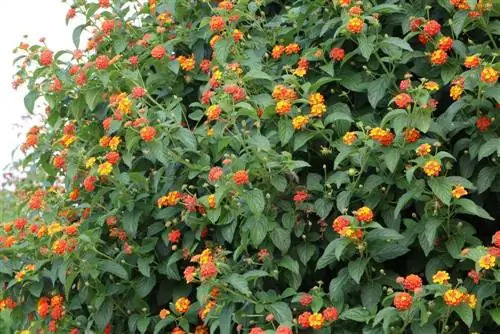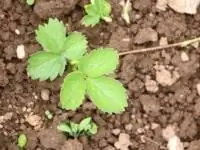- Author admin [email protected].
- Public 2023-12-17 03:39.
- Last modified 2025-01-24 12:45.
When you have harvested the first ripe strawberries from your own garden, you will immediately understand why strawberries are the Germans' absolute favorite fruit - below you will find out how easy strawberries are to propagate and why propagating the right varieties is a lot brings more strawberry flavor than you are used to from the usual commercial strawberries.
Forever strawberries, and it's free
Strawberry plants spend a lot of time producing the thick red flower bases that are supposed to attract insects for pollination (and that we eat as strawberries). They usually only manage this really well for two or three years (old varieties can be more persistent, we'll get to that later), then the harvest slows down and the exhausted strawberry plants should be replaced.
You can get new strawberries without breaking the bank by propagating existing strawberry plants. That's not a problem, you usually even have the choice between vegetative propagation (cloning) or sexual propagation from seeds:
1. Offshoot
Most strawberries form runners at the level of the soil surface, which you cut away in favor of fruit development as long as the strawberry plants bear well. If it no longer bears well, you can let the runners grow to create new strawberry plants.
A task that won't overwhelm you:
- Strawberries are easy to propagate if they form runners “correctly”
- They will soon look a lot like junior strawberries
- After some time of feeding from their mother, they usually show roots
- Including the leaves in the upper area, these are now plants that are capable of self-sufficient nutrition through photosynthesis
- The runners can be separated from the mother plant with a sharp knife
- And should first be planted two or three times in a pot with compost soil
- Because they still have to develop strong roots and gather strength before they can survive outdoors
- The young strawberries are placed in a sunny, wind-protected place for a few weeks
- If you pot the runners very early, the “umbilical cord” to the mother plant remains initially
- Because then the ability to eat self-sufficiently is not yet guaranteed to work
- Or not at all, new roots only form when they come into contact with the ground
- The runners hanging on the outside of the pot must first be remedied by potting them up
- The pots are placed around the mother during the root formation period
- If the young plants look nice and strong and have the first new leaves, they should have formed enough new roots
- It usually happens after two or three weeks
- You can see whether the root ball has developed well when you pot up the plants for planting
- If you have a nice tangle of fine and fresh-looking white roots in front of you, everything is fine
- If not, the plant will stay in the pot a little longer
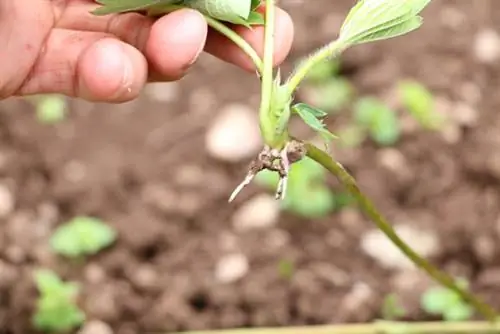
Usually cuttings are taken for propagation purposes in early summer (a little later than they are cut away to promote harvest). They can then be recognized as separate strawberry plants and show their own small roots. This approach fits well with the natural growth rhythm of the strawberry plant in that it begins to form the flower buds for the next season in its heart in the summer and allows them to ripen in late summer/autumn. That's why strawberries should always be in the ground in mid to late August, regardless of whether you're growing your own seedlings or completely new plantings.
You can plant rooted young plants until September, but then you have to expect a loss of yield when harvesting next year. Why you can assume that late-planted strawberries will also bloom and fruit next year (and why you can ignore the instructions that warn of total harvest failure for strawberries planted in autumn) can be found in the article “Balcony strawberries” in the section on overwintering.
If the young plants show their first flowers in the same season, you should remove them so that the plants develop well and strongly in order to produce a good harvest next year.
It is usually recommended to plant strawberries in a location that has not hosted strawberries in the last three years. This is intended to prevent soil fatigue, which inhibits plant development when strawberry plants (and other rose plants, this plant family is famous for its difficulties with soil fatigue) are cultivated in the same location for a longer period of time.
If you have enough garden space to “transplant” the strawberries back and forth, you can follow this recommendation without worrying at all about the mysteries of soil fatigue. Even in a small garden, strawberries can be easily moved to a new location every few years if you also cultivate other crops and crops. Other plant families are also happy when they are allowed to move a bit, and a kind of ring exchange between the crops is usually established (strawberries, for example, like to move into a former bean bed because the nitrogen nodules left behind by the bean roots are good for them).
If your garden space is limited and precious and the strawberry plants are actually your only crops apart from a few herbs (for which there is no other space provided), things could be tight for the new strawberries. Then you can either halve the area and move the strawberry plants alternately (and perhaps store a few strawberries in boxes or buckets, see article “Balcony strawberries”), or counteract the soil fatigue with creativity and soil knowledge, more about this in the article “Fertilize strawberries correctly”.
Tip:
If you read that “strawberry plants should be replaced annually if possible,” you don’t have to believe that. Strawberries are perennial plants that grow in one location for at least three years (much longer depending on the variety) and produce beautiful harvests. Annual culture certainly has the advantage that the plants are constantly being selected. For this reason, replacing plants that are completely in sap is about as logical as if you constantly buy new cars, drive them for a while and then scrap them so that the cars are constantly selected. The cultivation area can certainly be changed every year, and it's also true that strawberries remove nutrients from the soil. Counteracting this nutrient deprivation by changing the cultivation area every year is not very recommended for home gardeners - with this method you will soon be in China with your strawberries, but your garden soil will still suffer from a nutrient deficiency.
You should even distrust the advice not to cultivate strawberries in the same location for more than two to three years. This may be the case with modern cultivars, many of which are bred to be used in the first year and are then disposed of. If you rely on heirloom varieties, you are dealing with a slightly more robust category of plants. Lots of old strawberries, e.g. B. the famous 'Mieze Schindler' and her close relatives, only bear best in their fourth year and with a little soil care (see "Fertilizing strawberries properly") can stand in the same place for years.
2. Seeds

If strawberries bear well, the runners must be cut away so early for the sake of the harvest that they are difficult to root; These strawberry plants are better propagated from seeds. This is not only worth it to delight friends with strawberry plants, but it will also help you have a summer full of strawberries if you later sow the seeds at different times so that the strawberries ripen little by little. Yes, of course, there are monthly strawberries that produce a harvest from spring to late autumn on one plant - if you want to harvest real strawberries in noticeable quantities, you won't necessarily be happy with isolated, usually not very aromatic sweet fruits, only sowing "real strawberries" also brings "real strawberry harvest.”
As easy as propagation from seeds is, obtaining them could be a little difficult. Botanically, the strawberry is not a berry (with a seed in the middle like the “date berry” or several seeds like the “currant berry pumpkin”), but a “collective nut fruit” with a tasty, thickened flower base (the “strawberry”) and many small yellow nuts on its surface. These nuts are so tiny and delicate that most of us have never consciously seen or felt a strawberry seed on our tongues (you swallow around 100 seeds per strawberry).
Tip:
According to this story, even “city children who dislike creepy crawlies” find ants likeable: ants drag whole strawberries into their burrows to delight their larvae with “strawberries without cream”. Since the larvae don't eat the seeds, which are huge and hard for them, just as we don't eat the date pit, the seed nutlets are left over - and the ant parents obediently take them out again (or routinely during daily house cleaning, or in the exercise of "forward-looking storage") Bau transported into nature so that they can germinate into new strawberries If the ants get out of hand in the strawberry land of milk and honey, you can give them e.g. B. spoil the appetite with wormwood manure or strong peppermint tea; they usually move (to the neighbor) after such a storm surge.
These tiny yellow nuts contain, in even tinier dimensions, everything the “seed germ factory” needs: seed shell, (hopefully) the embryo created by pollination of the egg cell + cell division + nutritional tissue in the embryo sac; the complete equipment to germinate and survive until the growing plant becomes self-sufficient in terms of nutrition through the development of roots and leaves capable of photosynthesis.
The attempt to pull the seeds from the fresh strawberry with a fingernail/toothpick therefore ends in many cases with “damage to the germination factory ripe for demolition”; This way it works better:
- Halve a fully ripe strawberry
- Let dry with the cut side on newspaper
- Rubbing newspaper back and forth until most of the seeds have fallen off
- Carefully push the remaining seeds away from the outer shell with the blunt side of a knife
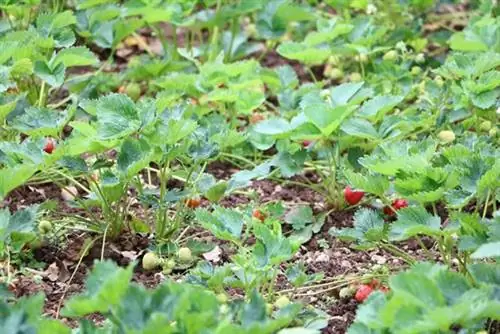
Now you can put the seeds in a dark, dry container and store them until they are sown in spring (or passed on to people with a garden and a strawberry hunger using the following sowing instructions):
- Stratify seeds one to three months before planned cultivation
- Means: breaking dormancy is what nature normally does with winter cold
- As an alternative, the refrigerator has to be used (or the outside window sill, the unheated garage)
- One month of cold is usually enough, you should only be on the safe side with rare seeds
- The seeds should/should not be ready for sowing until mid-February at the earliest
- Seedlings sown earlier do not reach the bed any more, and in most cases not at all:
- They die due to lack of light or develop unusable horny shoots
- Strawberry plants should be in the seed pot by the beginning of March for a normal harvest in June/July
- Seeds sown later postpone the harvest (or into the next year)
- Shortly before sowing, soak seeds in lukewarm water for a few hours
- Sprinkle into bowls/pots with lean (sandy, not nutrient-rich) potting soil
- Press down, sieve to a maximum height of 3 mm, spray wet and cover transparently
- Set up in a bright place (sun only indirectly), ventilate at least every other day
- Minimum temperature 16 °C, at an optimal 20 °C the seeds germinate faster
- The germination time otherwise depends on the variety, average values 2 to 6 weeks
- If seedlings are visible, remove cover
- Prick out 2 cm high seedlings or thin them out with scissors
- With a growth height of approx. 5 cm, the pupils can “go into the bed”
Every activity to secure the “eternal free strawberry supply” is doubly worthwhile if you choose the right strawberry variety:
Trade strawberries and real strawberries
In mass trade (corporate garden centers, plant discounters, hardware stores, spring specials, grocery discounters, internet platforms dealing in everything) you usually get strawberry young plants/seeds from strawberry varieties that were grown for commercial strawberry cultivation. They are produced on an industrial scale anyway, the “hobby gardener supply” can easily be diverted and forwarded to suitable (or not so suitable) points of sale.
These commercial fruit varieties have the “optimally salable fruit” as their breeding goal, which not only brings advantages for the hobby gardener: These cultivated varieties must have a whole range of properties; in order to be recognized for commercial cultivation, the Federal Plant Variety Office checks 40 different criteria - the Taste doesn't count. That's why he often falls by the wayside; Again and again you can read reports in which the “wonderful aroma” in a sales description is described as “meaningless”, “unusually intense” becomes “not so sparkling in terms of taste”, the “very fine aroma” is too subtle to find.
The propagation of modern cultivars often has the character of a game of chance: some cultivars of garden strawberries and most monthly strawberries (cultivated forms of wild strawberries bred to be “long-term carriers”) no longer produce runners; seeds from varieties mixed in the laboratory or bred in a quick process do not necessarily produce plants that resemble the mother plant (for more information see “Sowing and growing strawberries”).
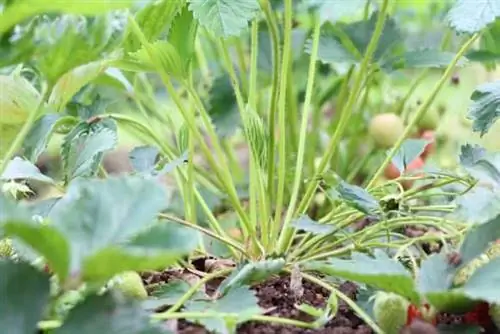
But traditional strawberry breeding, which has produced over 1,000 varieties of garden strawberries alone since the 18th century, lives on alongside industrial breeding; Many of the old varieties have survived and can be purchased through specialized nurseries.deaflora.de/Shop/Strawberries; Werden.manfredhans.de, product search strawberries) or private growers (search via forums, exchanges).
Buy from dealers who can ask you personally about their strawberries or how the strawberry seeds or young plants develop, where you can see the parent plants growing and perhaps even taste the fruits (as jam). Then propagate strawberries that bear fruits with real strawberry flavor (or speci alties like scented strawberries and spiced strawberries).
Then propagation is a lot more fun, curious home gardeners quickly go a step further and experiment with the other strawberry varieties that people cultivate: aromatic, strange apricot strawberries and particularly intensely tasting Chile strawberries; But once again, monthly strawberries or musk strawberries form runners from the Italian Piedmont, for which gourmets come especially during strawberry season; perhaps also a variety of scarlet strawberry called 'Little Scarlett', which has been cultivated since 1750 and (today) costs no less than €10 per jam jar. Have fun and enjoy your strawberry hunger!

